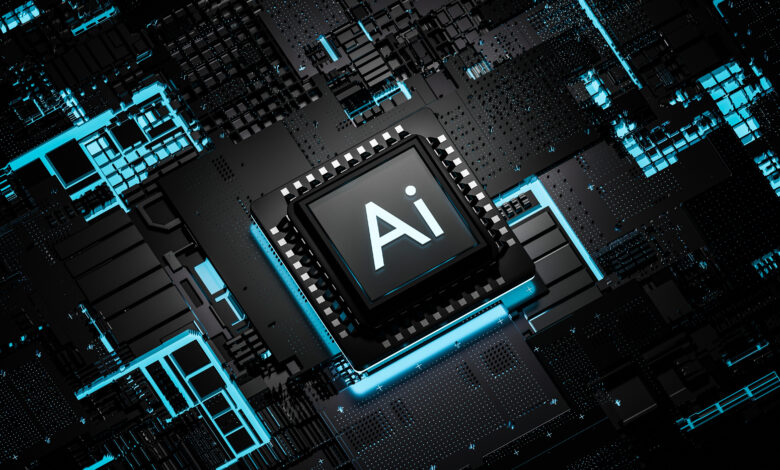Forget Nvidia: Wall Street Is Bullish on Another Unstoppable Artificial Intelligence (AI) Stock

Advanced Micro Devices is gathering serious momentum in the artificial intelligence (AI) space.
Nvidia was a $360 billion company just 18 months ago. Today, it sports a $3.3 trillion valuation, and it owes that remarkable growth to its graphics chips (GPUs) for data centers, which are designed for processing artificial intelligence (AI) workloads.
Although Nvidia has captured the lion’s share of the value created by AI so far, the industry is expanding quickly, and a number of other companies are participating. Advanced Micro Devices (AMD -0.77%) is one of them; not only has it developed a line of data center chips to compete with Nvidia, but it also snatched an early lead in another critical AI segment.
The Wall Street Journal tracks 49 analysts covering AMD stock, and the majority have given it the highest possible buy rating. Here’s why investors might want to follow the Street’s lead.
Image source: Getty Images.
AMD is currently laser-focused on AI
AMD always produced some of the most sought-after chips in the world for consumer electronics. Its processors can be found in Sony‘s PlayStation 5 and Microsoft‘s Xbox Series X. They also power the infotainment systems in Tesla‘s electric vehicles. Innovation is at AMD’s core, so it’s no surprise the company is pivoting its attention to AI.
On the consumer side, AMD views AI as the biggest inflection point for personal computing since the internet. The company developed a series of AI CPUs, GPUs, and NPUs (neural processing units) under its Ryzen brand, and customers like Dell and HP already shipped millions of computers featuring those chips. In fact, AMD estimates it has a 90% market share in this new market.
Generative AI applications like ChatGPT can rapidly generate text, images, videos, and computer code, but they require so much computing power that workloads typically bounce back and forth between the data center and the end user. AI chips will allow more of those workloads to be processed on computers and devices, creating a much faster (and more private) user experience.
On the data center side, AMD launched its MI300 lineup of chips last year. The MI300X is a pure GPU like Nvidia’s industry-leading H100, whereas the MI300A combines CPU and GPU hardware to create an accelerated processing unit (APU). AMD CEO Lisa Su said more than 100 enterprise and AI customers already deployed the MI300X GPU, including many of Nvidia’s best customers, like Microsoft and Oracle.
The MI300A, on the other hand, was selected by the Lawrence Livermore National Laboratory to power its new El Capitan supercomputer, which will be used to advance everything from fusion energy to high-density physics to national security.
AMD’s AI revenue is soaring
The MI300 is the fastest-growing product in AMD’s history, reaching $1 billion in revenue within just six months of its launch. It helped drive the company’s data center revenue to a record-high $2.3 billion in the recent first quarter of 2024 (ended March 31), representing an 80% increase from the year-ago period.
Su told investors she now expects sales from the MI300 series alone to top $4 billion in 2024, up from her original forecast of $3.5 billion issued in January.
Ryzen AI chips, on the other hand, drove AMD’s Q1 Client segment revenue to $1.4 billion, which marked an 85% increase from the year-ago period. This momentum should continue because the company just released the Ryzen AI 300 Series processors, which feature the world’s most powerful NPU designed for next-generation AI personal computers. They will power Microsoft’s new Copilot+ computers, which are built specifically to deliver AI experiences to consumers.
Despite the strong contribution from AMD’s AI chips, the company’s total Q1 revenue of $5.5 billion represented a year-over-year increase of just 2%. It was dragged down by slowing sales in the gaming segment, partly because demand for the PlayStation 5 and Xbox Series X is tapering off. Revenue also declined in AMD’s embedded segment, which houses its adaptive computing division with the newly acquired Xilinx. That business is expected to improve in the second half of this year.
Wall Street is very bullish on AMD stock
The Wall Street Journal tracks 49 analysts covering AMD stock, and 35 of them have given it the highest possible buy rating. Another four are in the overweight (bullish) camp, and 10 recommend holding. No analysts recommend selling.
While that is an overwhelmingly bullish consensus, there is a caveat. Based on AMD’s trailing 12-month non-GAAP (generally accepted accounting principles) earnings per share of $2.67 and its current stock price, it trades at a price-to-earnings (P/E) ratio of 59.7. That makes AMD almost twice as expensive as the Nasdaq-100 technology index, which trades at a P/E ratio of 31.7.
It also means AMD stock is approaching Nvidia‘s P/E of 74.2, except Nvidia is delivering triple-digit percentage growth at the top and bottom line to back up its premium valuation. Through that lens, it’s hard to justify AMD’s current stock price.
However, Wall Street expects AMD to deliver $3.51 in earnings during 2024, which places its forward P/E ratio at a more reasonable level of 45.5. Looking to 2025, analysts believe AMD could deliver earnings of $5.59, which shrinks its forward P/E ratio to just 28.5.
In other words, AMD stock appears significantly cheaper the further into the future investors are willing to look. If they can hold on to the stock for at least two years, they could do extremely well because it effectively looks cheaper than where the Nasdaq-100 trades today. Plus, by that time, AMD should be reaping substantial rewards from its efforts in AI.
Anthony Di Pizio has no position in any of the stocks mentioned. The Motley Fool has positions in and recommends Advanced Micro Devices, HP, Microsoft, Nvidia, Oracle, and Tesla. The Motley Fool recommends the following options: long January 2026 $395 calls on Microsoft and short January 2026 $405 calls on Microsoft. The Motley Fool has a disclosure policy.



